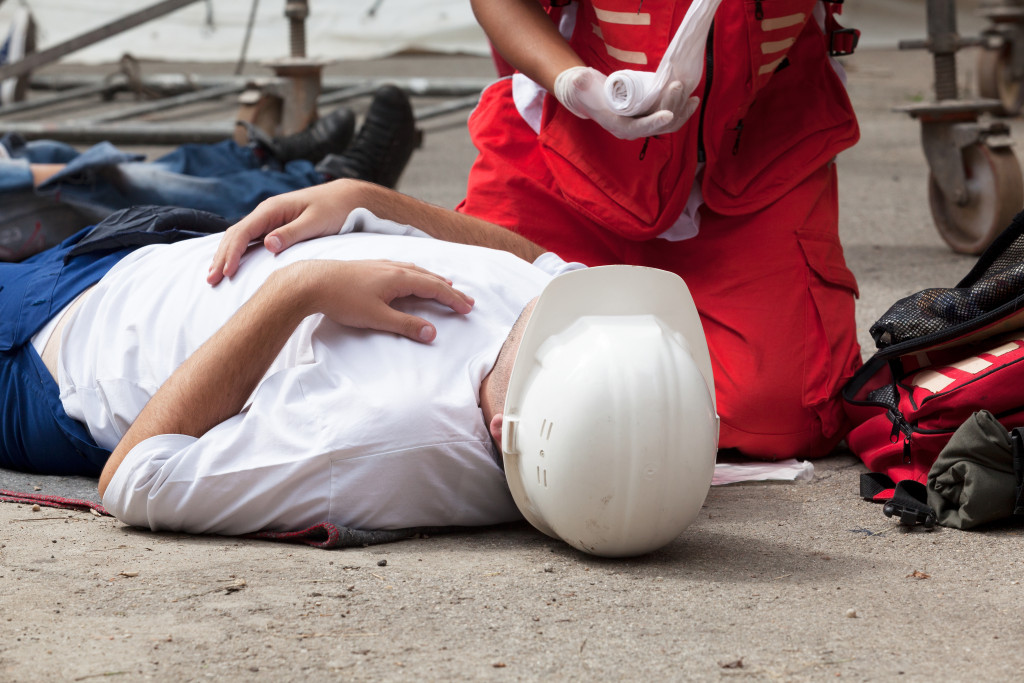Workplace accidents happen all over the world, every day. They can range from minor scrapes and bruises to significant injuries and even death. Employers could have prevented these accidents in many cases if they had taken proper safety precautions. It’s estimated that over 300 million workplace accidents happen worldwide, and a fraction of that comes from the United States.
There are a variety of reasons why workplace accidents occur. In some cases, it may be due to hazardous materials or equipment. Other times, it may be because of carelessness on the part of the worker or employer. Regardless of the cause, workplace accidents can have devastating consequences.
Unfortunately, some of these dangers and hazards can’t be seen. These kinds of hazards can be more dangerous in the long run. In some instances, it can affect productivity and physical health. However, it can lead to employee hospitalization and even death when they get worse. Here are the five unseen dangers that could be in your office.
Repetitive Strain Injury
People think that desk jobs are safe, but that’s not always the case. Repetitive strain injuries (RSIs) are a common type of workplace injury. RSIs are caused by repetitive motions that strain the muscles, tendons, and nerves. These motions can include typing, using a mouse, or even writing.
RSIs can be painful and debilitating. In some cases, they can even lead to permanent nerve damage. It can also lead to carpal tunnel syndrome, which is a condition that affects the hands and wrists. If you have an RSI, you may experience pain, numbness, tingling, or weakness in the affected area.
You can prevent RSIs by taking breaks often and stretching your muscles. You should also avoid working in the same position for long periods. If you start to experience symptoms, it’s essential to see a doctor.
Ergonomic Hazards
Ergonomics is the study of how people interact with their environment. It includes everything from furniture to equipment to the way work is structured. Poor ergonomics can lead to various injuries, including musculoskeletal disorders (MSDs). MSDs are a type of injury that affects the muscles, tendons, ligaments, nerves, and joints. They can be caused by repetitive motions, awkward positions, or forceful movements.
Some common symptoms of MSDs include pain, stiffness, numbness, tingling, and weakness. If you have an MSD, it’s essential to see a doctor. Treatment may include rest, ice, heat, physical therapy, or surgery.
Good ergonomics can reduce the chances of MCDs in your office. Proper ergonomics include adjustable chairs and desks, adequate lighting, and an appropriate workstation layout.
Work-Related Stress

Stress is a normal part of life, but work-related stress can be problematic. Work-related stress is a type of stress caused by the work environment. For example, it can be caused by long hours, tight deadlines, demanding bosses, and difficult coworkers.
Work-related stress can lead to various problems, including anxiety, depression, and burnout. It can also contribute to physical health problems such as headaches, stomach problems, and high blood pressure. If you’re experiencing work-related stress, it’s essential to see a doctor or counselor. Treatment may include relaxation techniques, medication, and therapy.
Radon and Carbon Monoxide
Radon and carbon monoxide are both invisible, odorless, and tasteless gases. They can both be found in the workplace and can be dangerous. Radon is a radioactive gas that’s found in the soil. It can enter the workplace through cracks in the foundation or floors. Combustion engines produce carbon monoxide, and it can enter the workplace through exhaust fumes.
Both radon and carbon monoxide are dangerous because they can cause cancer. Radon is the leading cause of lung cancer in non-smokers. Carbon monoxide can also cause brain damage and death.
If you want protection against these gases, it’s crucial to have proper ventilation inside your office. It’s also vital to install something that can detect them. Having detectors is one part of carbon monoxide and radon mitigation planning. The next part assesses the risk these gases pose and takes steps to reduce that risk. But, of course, if your office is safe from these invisible fumes, then you might not even have to make these plans.
Asbestos
Asbestos is a mineral that’s found in rocks and soil. It can be mined and used in various products, including insulation and fireproofing materials. However, asbestos is dangerous because it can cause cancer. It’s the leading cause of mesothelioma, a type of cancer that affects the lungs.
Asbestos is most dangerous when it’s airborne. When it’s disturbed, it can release fibers into the air. These fibers can be inhaled, and they can cause cancer. Asbestos is also dangerous because it can stay in your body for years without causing any symptoms. By the time you develop cancer, it may be too late.
To protect against asbestos, it’s essential to have your office inspected for it. If you find asbestos, it’s critical to have it removed by a professional. Asbestos removal is a complex and dangerous process, so it’s important to leave it to the experts.
Working in an office can be hazardous to your health if you’re not careful. There are a variety of potential health and safety hazards, including ergonomic injuries, work-related stress, radon, carbon monoxide, and asbestos. By being aware of these hazards and taking steps to avoid them, you can help keep yourself safe.

